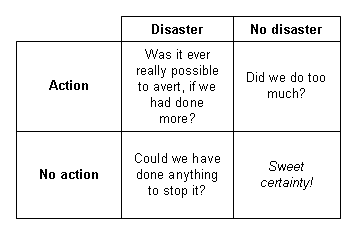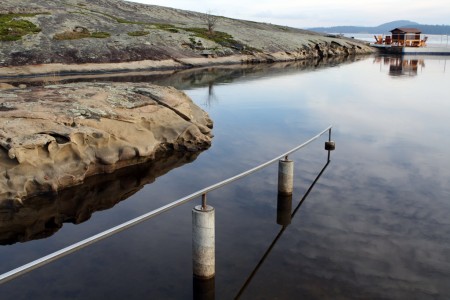This may strike some people as abstract, but perhaps it will be of interest to someone.
Assume, to start with, that climate change is a major threat to humanity and that concerted global effort is required to deal with it. In that case, I see two possibilities:
- If all of humanity and all human knowledge were put in an abstract place together and given all the time they needed to educate one another, consider the data, and deliberate, they would come to a conclusion that strong climate change mitigation action ought to be undertaken.
- Even with all our current information and unlimited time, this conclusion could not be widely endorsed. It may, however, be the case that the people in this abstract space would reach the conclusion that we must act, if only they had some new information that we have not yet observed or collected.
Part of the answer involves the depths of human ideological and theological beliefs. If there are people who can never be shaken in their belief that the world is benevolent and concerned about humans, they could never be convinced otherwise by education or information. Part of the answer may have to do with the overall relationship in human beings between perceived risks and the willingness to take precautionary action. That said, I am convinced that an impartial assessment of climate science and the situation we are in would lead most any rational human being to endorse a precautionary approach.
I am similarly convinced that people in my ideal case would eventually overwhelmingly support aggressive mitigation actions. I don’t think human beings would be happy to expose all future generations to the risk of misery and possible extermination, just so they can avoid a transition to renewable energy that would be necessary regardless of climate change, and which can probably be accomplished for a few percent of GDP, spread over many years.
Of course, the real world is very different from my little imagined experiment. Time is important here. If climate change deniers can keep the public confused for another 20 years, that will have a huge impact, even if they could eventually have been unmasked as self-interested charlatans in my infinite-time case. Time can also work to our advantage, however. Striking new information can come to light and, in so doing, it can have an effect on what beliefs and priorities people hold faster than old information would be able to do in an education-and-discourse manner. For example, if we were to observe a drought of unprecedented scale and severity, it might have a big impact on the willingness of people to endorse the kind of high-level policies and actions necessary to curb the harmful influence of human beings on climate (or perhaps not).
What do you think? Would people reach a consensus in favour of strong mitigation action, given all the information and infinite time? If not, what further information might they require? In either case, what is the effect of the differences between my ideal infinite-time case and the real world, in which our choices in the next couple of decades will do much to determine where the climate ends up?






